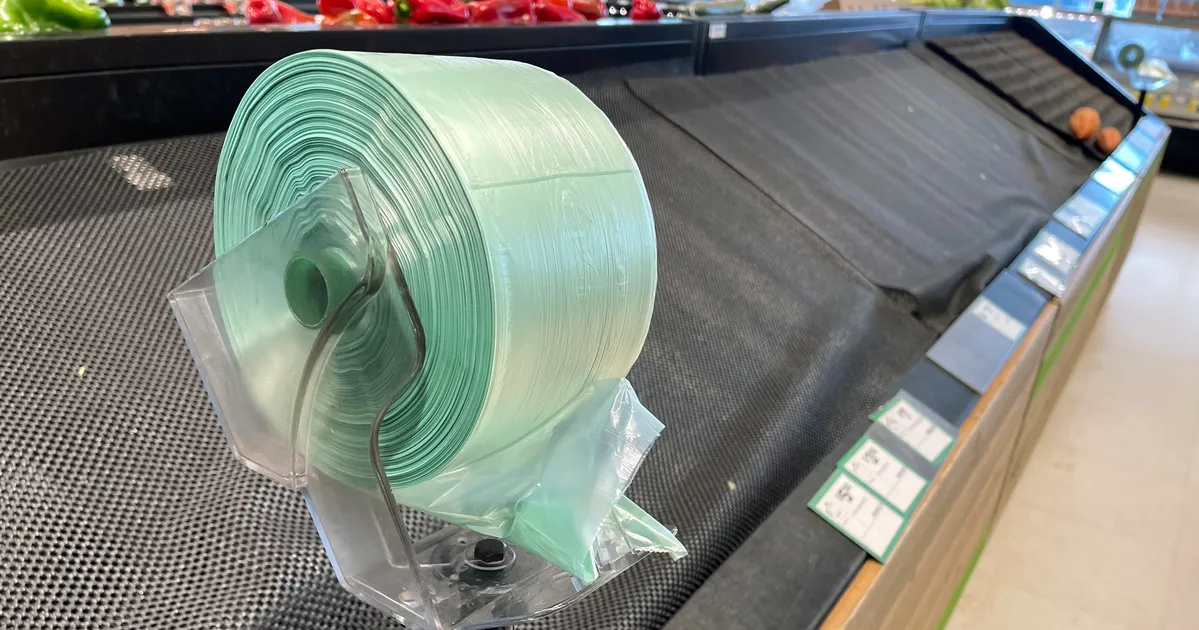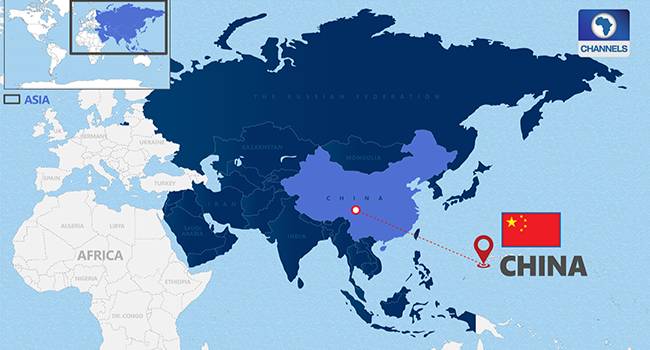
LOADINGERROR LOADING
A trip to the grocery store often feels mechanical: you go in, grab your usual list of necessities, pack them up, then head home to unload. But the truth is, each decision we make inside the store impacts both our own lives and the planet. From the types of fruits, vegetables and other foods we choose to buy to how far we travel to get our groceries, every choice carries an ecological footprint. Even the bags we use to pack our items matter.
Speaking of the latter, while much has been said about bans on plastic checkout bags, few people discuss the potential impact of produce sacks — the ones on a roll used for fruits and vegetables inside the store. These bags come in two main varieties, each with its own implications.
Advertisement
Standard plastic produce bags are completely clear, shiny and very thin, while compostable or biodegradable versions feel slightly crinkly, are a bit thicker and often appear opaque with a faint green or beige tint. They are usually labeled “compostable” or “biodegradable.”
It turns out that the bag you choose can have an impact on your shopping experience, the life of your groceries and the environment. That’s why we asked grocery store experts to break down everything you need to know about produce bags on a roll, from how to use them to the subtle differences that matter for both you and the planet. Here’s what we learned.
Advertisement
Produce bags are good for certain types of foods … but bad for others.
Found across all produce aisles, the plastic bags on a roll are the easiest way to shop for various loose fruits and vegetables.
According to Kevin Kelly, the CEO of Emerald Packaging, one of the leading plastic packaging companies in the United States, the regular plastic baggies are “best for leafy greens and many herbs.” Kelly notes that the bags allow these products to breathe “in a way that extends shelf life once home” and can help avoid germs or bacteria at the checkout counter.
“Think soft, leafy greens, mainly,” he said. “Perhaps celery also. Items that are alive and respiring.”
Advertisement
That being said, Kelly is quick to note that compostable bags should be treated differently. “They provide no oxygen transmission,” he said. “They actually kill leafy greens very quickly. You will likely get two weeks of shelf life for cilantro in plastic and less than a week in a compostable produce bag. We may feel better using biodegradable material, but it actually increases food waste.”
Claudia Taglich, co-owner of New York specialty grocery store Provisions Market, suggests using the plastic bags for bread as well. “They work very well with homemade sourdough bread and baguettes,” she said. “They are great general-use bags since they’re breathable, allowing the breads to fit snugly to the items inside.”
Kelly advises against using produce bags of either type for anything with a skin or that can be easily transported loosely. “I don’t bag onions, apples, potatoes or citrus,” he said. According to studies, certain fruits and veggies — including apples, bananas and tomatoes — produce ethylene gas when ripening, which can accelerate the spoilage of nearby products. Keeping the foods apart, outside of a bag, especially when storing them, might therefore increase their lifespan.
Advertisement
Should you keep the produce in the baggies once you get home?
Generally speaking, experts advise you remove produce from the plastic bags when storing foods in the fridge — especially ethylene-producing fruits and vegetables. That goes for items stored at room temperature as well, unless you want them to ripen more quickly.
However, the same products that benefit from being put into these plastic bags when shopping should actually stay in the bags when refrigerated.
“In many cases, like leafy greens and herbs, keeping them in the bag and putting them in the fridge is the best route,” Kelly explained. “The combination extends shelf life for many days, preventing food waste, one of the biggest contributors to greenhouse gases there is.”
Advertisement
You can keep using the bags beyond their initial use.
“The two most environmentally responsible ways to act are to reuse the bags as trash can liners or recycle them,” said Chris DeArmitt, founder and president of the Plastics Research Council.
Kelly also suggests reusing them at home for storage or for “picking up dog poop.” Another option? Reusing them on your next grocery trip to pack produce.
Other creative ideas include using the bags as packing material for fragile items, repurposing them as storage for household items, or donating them to community centers and schools for art projects (just call ahead to make sure they’ll accept them).
Advertisement
Perhaps the most common option is to recycle the bags. Either go through your usual recycling process or take them back to the store’s drop-off container. Just make sure to wash them out before they are turned into pallet wrap or garbage bags. Ideally, reuse them a couple of times before recycling.
There are alternatives to produce baggies, but they’re not always better.
Many people prefer to skip the plastic bags entirely — compostable or not — and use their own reusable carry bags instead.
Advertisement
Taglich, for example, is partial to cartons when shopping for fragile produce. “They provide structural support so delicate vegetables don’t get bruised,” she said, also mentioning the flexibility of mesh bags. “A combo would be best,” she noted.
Although Kelly and DeArmitt agree there are other options, they both believe that using plastic bags might actually be more effective overall.
20 Years OfFreeJournalism
Your SupportFuelsOur Mission
Your SupportFuelsOur Mission
For two decades, HuffPost has been fearless, unflinching, and relentless in pursuit of the truth. Support our mission to keep us around for the next 20 — we can’t do this without you.
We remain committed to providing you with the unflinching, fact-based journalism everyone deserves.
Thank you again for your support along the way. We’re truly grateful for readers like you! Your initial support helped get us here and bolstered our newsroom, which kept us strong during uncertain times. Now as we continue, we need your help more than ever. We hope you will join us once again.
We remain committed to providing you with the unflinching, fact-based journalism everyone deserves.
Thank you again for your support along the way. We’re truly grateful for readers like you! Your initial support helped get us here and bolstered our newsroom, which kept us strong during uncertain times. Now as we continue, we need your help more than ever. We hope you will join us once again.
Support HuffPost
Already contributed? Log in to hide these messages.
“You can opt for an alternative, but it will cost more and increase impact as a matter of scientific fact,” DeArmitt said. “In theory, the reusable compostable plastic bag would have lower impact but, in reality, people forget them and do not reuse them enough times for that to be the case. Interestingly, plastic bag bans were found to increase greenhouse gas emissions and sales of thicker plastic trash liners because people had to buy them instead.”
Advertisement
Kelly echoes those sentiments, specifically noting that netted bags, for example, might have a lower eco footprint but you will lose the benefits of plastic for leafy greens.



